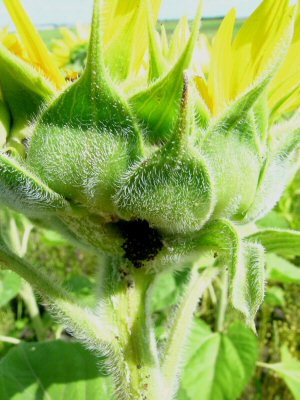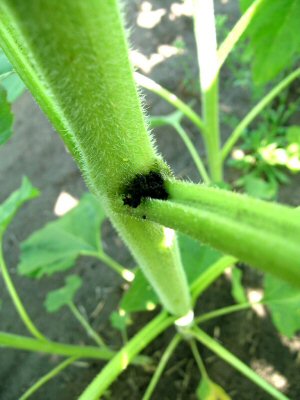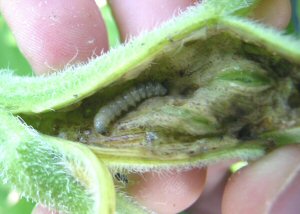Sunflower Bud Moth
Very high populations of this pest have been reported in the past, however, the sunflower bud moth does not cause high levels of economic loss. Presence of the bud moth is detected by the presence of frass (insect excrement) around an entrance hole either in the stalk or the back of the sunflower head.
Biology
Sunflower bud moths (Suleima helianthana) have a wingspread of about 16 to 18 millimetres (0.63 inches). Each gray-brown forewing has two dark transverse bands. One band extends across the middle of the wing, and the second band is located near the wing tip. The larva (Figure 3) has a dark head capsule with a smooth, cream-colored body. Two generations of sunflower bud moth are produced per year in Manitoba. Adults from overwintering pupae emerge during the last week of May to mid June. A few days after adult emergence, eggs are deposited on the terminals of immature sunflower or on the receptacle of mature sunflower. Eggs also are deposited in leaf axils.
The hatched larvae begin tunneling into the sunflower plant. The initial infestation in mid-June is characterized by an entrance hole surrounded by black frass (insect excrement) (Figures 1 and 2). Mature larvae pupate within the sunflower plant. Pupae move to the opening of the entrance holes formed in the stem or head tissue so that adults can emerge easily.
The second generation adults appear in July and August. Infestations by the second generation larvae is not economically important.
Scouting Techniques
A field monitoring scheme for this insect has not been established since it is not of economic significance.
Economic Thresholds
None has been determined.
Control Tips
Insecticide use has not been warranted for control of sunflower bud moth.

Figure 1

Figure 2

Figure 3

